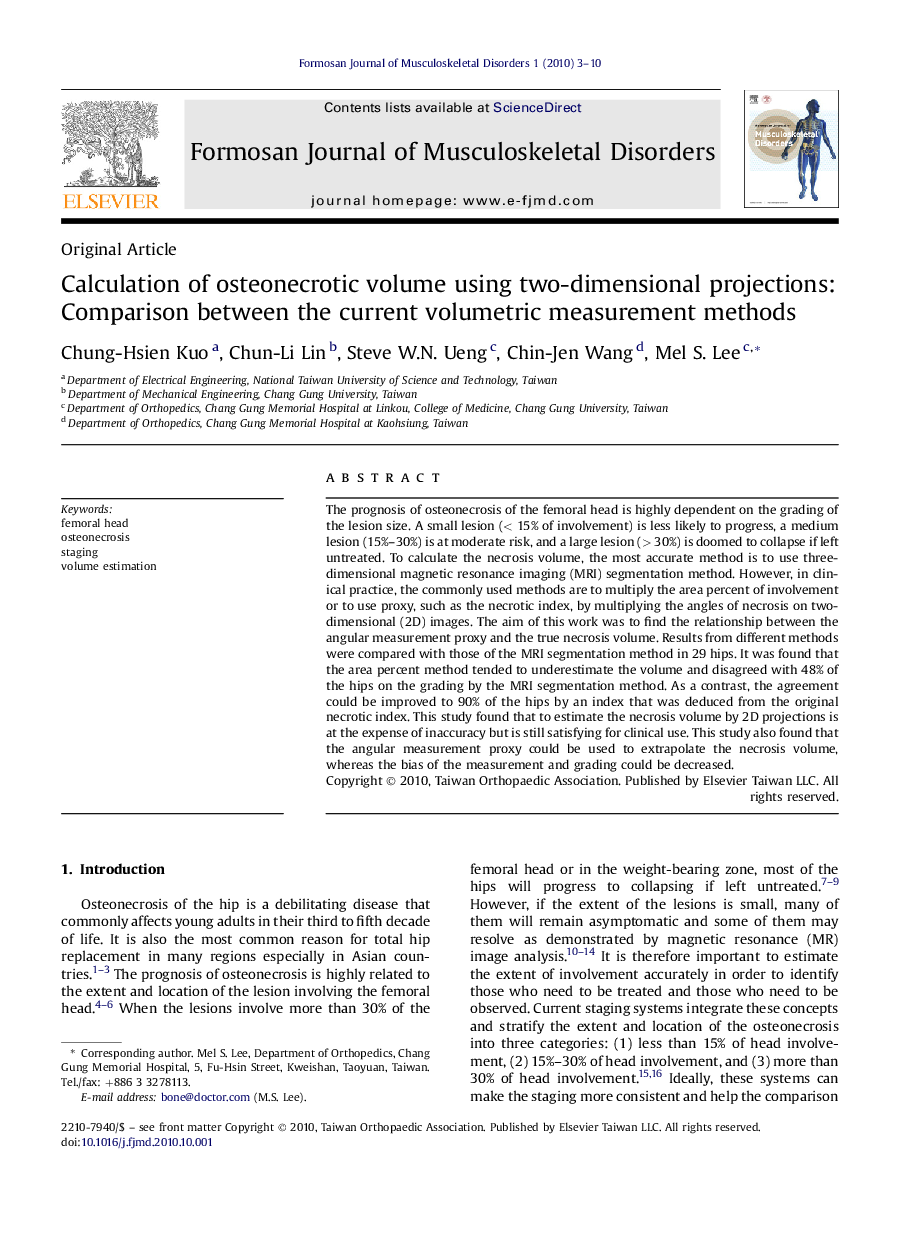| Article ID | Journal | Published Year | Pages | File Type |
|---|---|---|---|---|
| 4055484 | Formosan Journal of Musculoskeletal Disorders | 2010 | 8 Pages |
Abstract
The prognosis of osteonecrosis of the femoral head is highly dependent on the grading of the lesion size. A small lesion (< 15% of involvement) is less likely to progress, a medium lesion (15%-30%) is at moderate risk, and a large lesion (> 30%) is doomed to collapse if left untreated. To calculate the necrosis volume, the most accurate method is to use three-dimensional magnetic resonance imaging (MRI) segmentation method. However, in clinical practice, the commonly used methods are to multiply the area percent of involvement or to use proxy, such as the necrotic index, by multiplying the angles of necrosis on two-dimensional (2D) images. The aim of this work was to find the relationship between the angular measurement proxy and the true necrosis volume. Results from different methods were compared with those of the MRI segmentation method in 29 hips. It was found that the area percent method tended to underestimate the volume and disagreed with 48% of the hips on the grading by the MRI segmentation method. As a contrast, the agreement could be improved to 90% of the hips by an index that was deduced from the original necrotic index. This study found that to estimate the necrosis volume by 2D projections is at the expense of inaccuracy but is still satisfying for clinical use. This study also found that the angular measurement proxy could be used to extrapolate the necrosis volume, whereas the bias of the measurement and grading could be decreased.
Related Topics
Health Sciences
Medicine and Dentistry
Orthopedics, Sports Medicine and Rehabilitation
Authors
Chung-Hsien Kuo, Chun-Li Lin, Steve W.N. Ueng, Chin-Jen Wang, Mel S. Lee,
